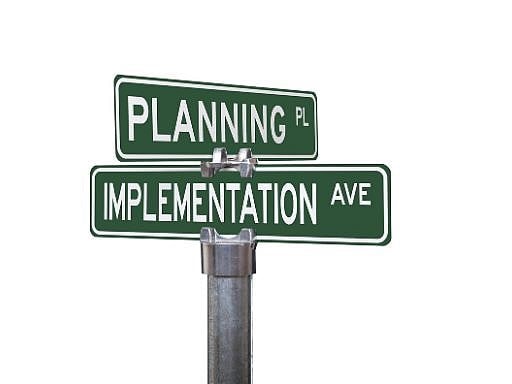Main Links

Last Updated February 27, 2023
 Software development planning is an important part of the software development process. It involves setting goals and objectives for the project, identifying the resources needed to achieve these goals, and outlining the steps necessary to complete the project in a timely manner.
The plan also helps to ensure that the project has been thoroughly thought out and that all stakeholders are on the same page. It is a crucial step in any software development project and should be taken seriously.
Software development planning is a comprehensive plan that covers all aspects of the software development process. It includes defining the project scope, specifying the requirements, and creating the design.
The plan should also include risk management, quality assurance, and technical support. It should also include a budget and timeline for the project, as well as the resources needed to complete it.
Finally, the plan should include measures for monitoring progress and reporting on results. It is important to have a plan in place to ensure that the project is completed on time and within budget.
Software development planning is an important part of the software development process. It involves setting goals and objectives for the project, identifying the resources needed to achieve these goals, and outlining the steps necessary to complete the project in a timely manner.
The plan also helps to ensure that the project has been thoroughly thought out and that all stakeholders are on the same page. It is a crucial step in any software development project and should be taken seriously.
Software development planning is a comprehensive plan that covers all aspects of the software development process. It includes defining the project scope, specifying the requirements, and creating the design.
The plan should also include risk management, quality assurance, and technical support. It should also include a budget and timeline for the project, as well as the resources needed to complete it.
Finally, the plan should include measures for monitoring progress and reporting on results. It is important to have a plan in place to ensure that the project is completed on time and within budget.
 The first step in creating a successful software development plan is identifying your requirements. What do you need the software to do? What features will be essential? Once you've identified what the software needs to do, you can begin to develop a plan for how it will be created and implemented.
Knowing the requirements from the start is crucial for ensuring that your software development plan runs smoothly. Once you have identified the requirements for the software development plan, it is important to write them down so that everyone involved in the project has a clear understanding of what is expected.
It is also important to include details about the scope of the project, what technologies will be used, any deadlines or milestones, who will be involved, any risks or challenges that may arise, and any resources that may be needed. Writing down the requirements will help keep everyone on the same page and ensure that everyone is working towards the same goals.
The first step in creating a successful software development plan is identifying your requirements. What do you need the software to do? What features will be essential? Once you've identified what the software needs to do, you can begin to develop a plan for how it will be created and implemented.
Knowing the requirements from the start is crucial for ensuring that your software development plan runs smoothly. Once you have identified the requirements for the software development plan, it is important to write them down so that everyone involved in the project has a clear understanding of what is expected.
It is also important to include details about the scope of the project, what technologies will be used, any deadlines or milestones, who will be involved, any risks or challenges that may arise, and any resources that may be needed. Writing down the requirements will help keep everyone on the same page and ensure that everyone is working towards the same goals.
 Creating a software development plan can be a daunting task, especially when it comes to estimating the workload. It's important to take the time to accurately assess the amount of work that will need to be completed and to create a timeline with realistic goals.
Doing so can help ensure that the project is completed in a timely manner and with quality results. When making an estimation of the workload for a software development plan, it’s important to consider the complexity of the project.
First, analyze the scope of the project, including the features and functionality that need to be developed. Estimate how much time each task will take, taking into account any dependencies that might exist between tasks.
Once you have a rough idea of the total time required, adjust the timeline accordingly. Gather information about the skills, tools, and materials needed, and estimate the cost of acquiring or developing them. Determine the number of personnel needed to complete the project.
Finally, factor in the cost of any external services needed, such as hosting, software licenses, and marketing. The plan should also include milestones and deliverables, as well as any risks or potential roadblocks that could arise along the way.
By creating a detailed plan and estimating the workload accurately, you can ensure that the project will be completed on time and with quality results.
Creating a software development plan can be a daunting task, especially when it comes to estimating the workload. It's important to take the time to accurately assess the amount of work that will need to be completed and to create a timeline with realistic goals.
Doing so can help ensure that the project is completed in a timely manner and with quality results. When making an estimation of the workload for a software development plan, it’s important to consider the complexity of the project.
First, analyze the scope of the project, including the features and functionality that need to be developed. Estimate how much time each task will take, taking into account any dependencies that might exist between tasks.
Once you have a rough idea of the total time required, adjust the timeline accordingly. Gather information about the skills, tools, and materials needed, and estimate the cost of acquiring or developing them. Determine the number of personnel needed to complete the project.
Finally, factor in the cost of any external services needed, such as hosting, software licenses, and marketing. The plan should also include milestones and deliverables, as well as any risks or potential roadblocks that could arise along the way.
By creating a detailed plan and estimating the workload accurately, you can ensure that the project will be completed on time and with quality results.
 When it comes to creating a successful software development plan, predicting the resources that will be needed is key. Knowing what resources, both physical and digital, will be necessary to execute the plan and make it successful is of utmost importance.
This step is important in ensuring that the plan will be successful and that all of the necessary components are accounted for. When predicting the resources needed for a successful software development plan, it is important to consider all aspects of the software development process.
This includes the types of hardware, software, and tools needed, as well as the personnel, time, and money that will be required. It is also important to consider any potential risks or challenges that the development may encounter, and plan accordingly in order to minimize those risks.
Additionally, it is important to assess any potential dependencies and ensure that the resources needed for those are accounted for. Finally, it is important to consider any potential changes in the future and plan for how those changes will be addressed.
By taking all of these factors into consideration and planning accordingly, it is possible to create a successful software development plan.
When it comes to creating a successful software development plan, predicting the resources that will be needed is key. Knowing what resources, both physical and digital, will be necessary to execute the plan and make it successful is of utmost importance.
This step is important in ensuring that the plan will be successful and that all of the necessary components are accounted for. When predicting the resources needed for a successful software development plan, it is important to consider all aspects of the software development process.
This includes the types of hardware, software, and tools needed, as well as the personnel, time, and money that will be required. It is also important to consider any potential risks or challenges that the development may encounter, and plan accordingly in order to minimize those risks.
Additionally, it is important to assess any potential dependencies and ensure that the resources needed for those are accounted for. Finally, it is important to consider any potential changes in the future and plan for how those changes will be addressed.
By taking all of these factors into consideration and planning accordingly, it is possible to create a successful software development plan.
 When it comes to software development, an implementation plan is key. A well-thought-out plan will ensure that the project is completed on time, within budget, and meets all the requirements.
It's important to consider the scope of the project, the resources needed to complete it, the timeline for completion, and any potential issues that may arise. With a solid implementation plan in place, you can be confident that your software development project will be successful.
1. Establish Goals and Objectives: Take the time to thoroughly consider what you want to accomplish with your software development project. Make sure that your goals and objectives are clear, measurable, and achievable.
2. Identify Resources: Identify the resources that you will need to complete the project, such as personnel, hardware, software, and any other materials.
3. Establish a Timeline: Establish a timeline for the completion of the project. This should include milestones and deadlines, as well as specific tasks that need to be completed.
4. Develop a Budget: Develop a budget for the project, taking into account all the resources that you need and the timeline for completion.
5. Identify Risks: Identify any risks that may arise during the course of the project and develop plans to mitigate them.
6. Monitor Progress: Monitor the progress of the project to ensure that it is on track. Make changes as needed to keep the project on schedule and within budget.
7. Evaluate Performance: At the end of the project, evaluate the performance of the project to determine if it was successful and what improvements can be made for the next project.
When it comes to software development, an implementation plan is key. A well-thought-out plan will ensure that the project is completed on time, within budget, and meets all the requirements.
It's important to consider the scope of the project, the resources needed to complete it, the timeline for completion, and any potential issues that may arise. With a solid implementation plan in place, you can be confident that your software development project will be successful.
1. Establish Goals and Objectives: Take the time to thoroughly consider what you want to accomplish with your software development project. Make sure that your goals and objectives are clear, measurable, and achievable.
2. Identify Resources: Identify the resources that you will need to complete the project, such as personnel, hardware, software, and any other materials.
3. Establish a Timeline: Establish a timeline for the completion of the project. This should include milestones and deadlines, as well as specific tasks that need to be completed.
4. Develop a Budget: Develop a budget for the project, taking into account all the resources that you need and the timeline for completion.
5. Identify Risks: Identify any risks that may arise during the course of the project and develop plans to mitigate them.
6. Monitor Progress: Monitor the progress of the project to ensure that it is on track. Make changes as needed to keep the project on schedule and within budget.
7. Evaluate Performance: At the end of the project, evaluate the performance of the project to determine if it was successful and what improvements can be made for the next project.